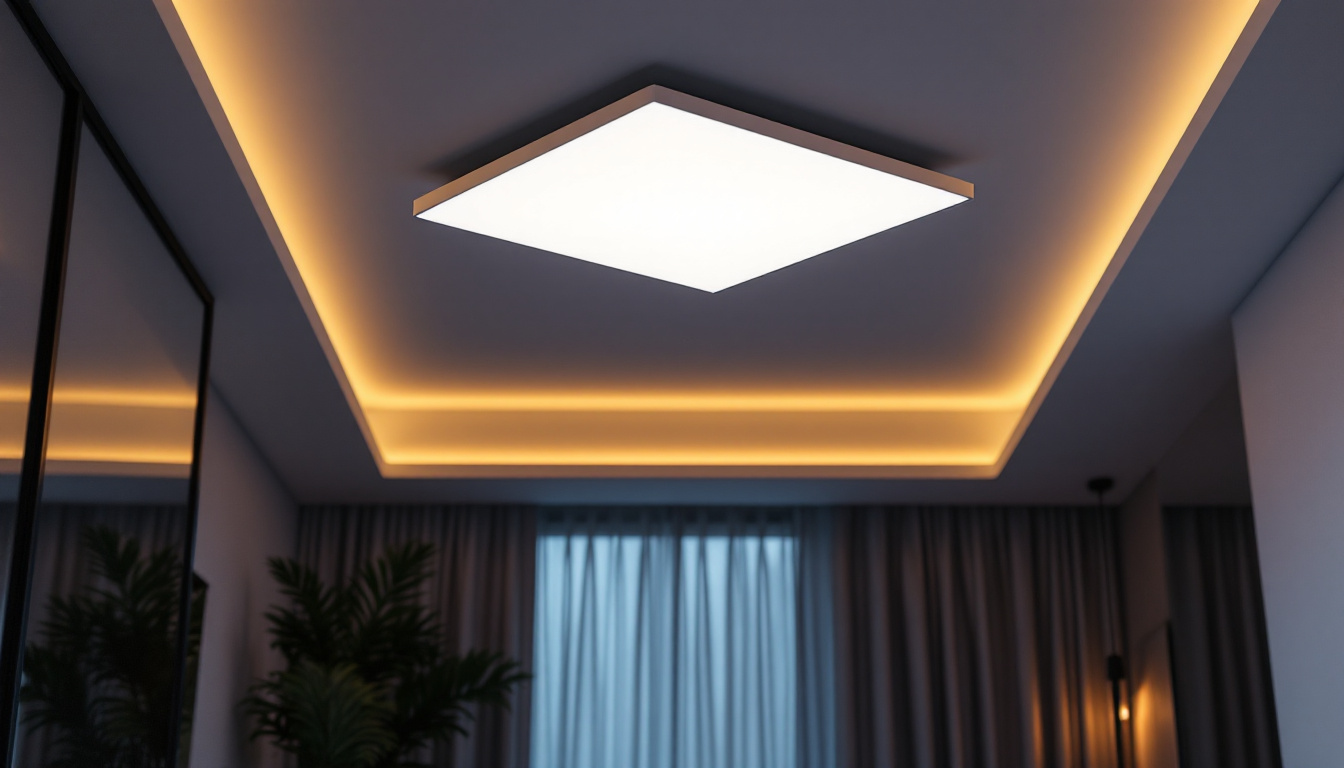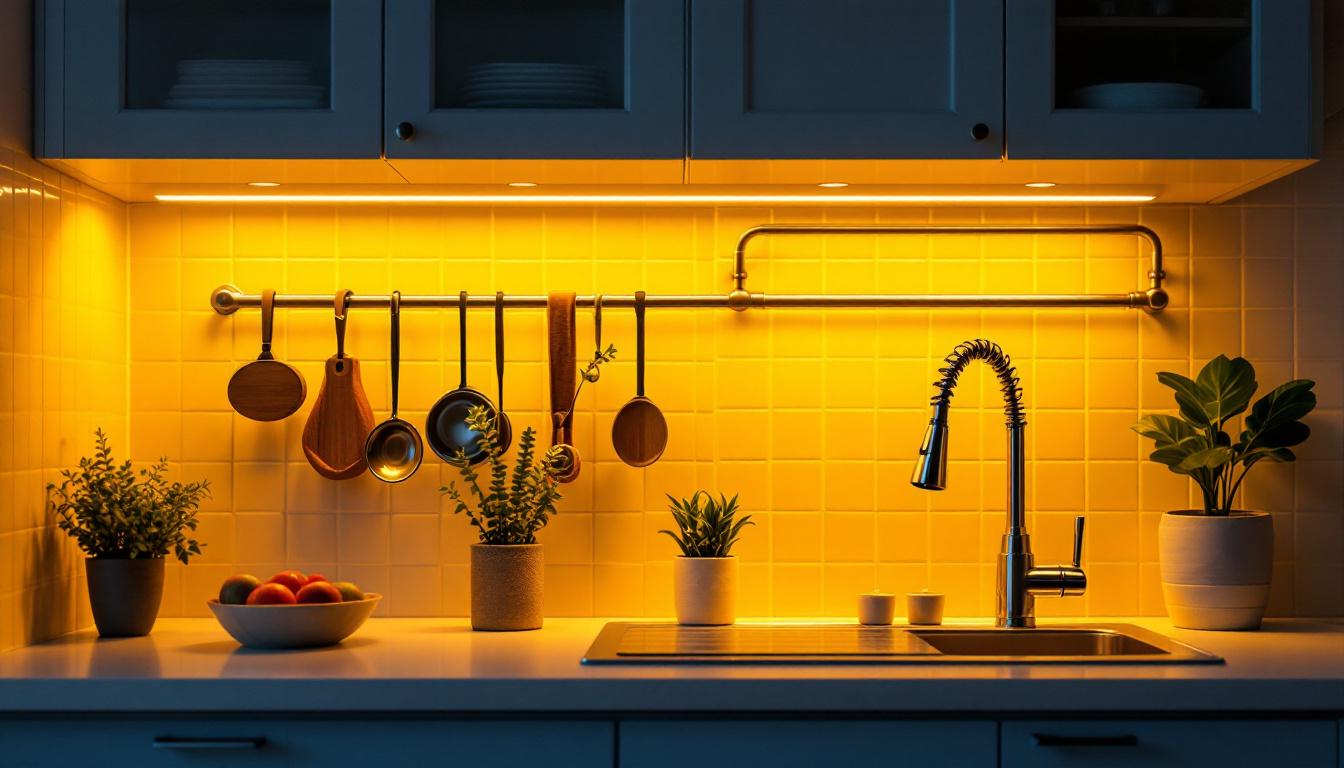
In the quest for sustainable living and reduced energy consumption, ceiling light panels have emerged as a pivotal component in modern lighting solutions. These fixtures not only enhance the aesthetic appeal of spaces but also play a significant role in improving energy efficiency. This article delves into the various aspects of ceiling light panels, examining their design, functionality, and the broader implications for energy savings in both residential and commercial settings.
Ceiling light panels are flat, sleek lighting fixtures that are typically installed in ceilings to provide uniform illumination. They are commonly used in offices, schools, hospitals, and homes, offering a modern alternative to traditional lighting options such as fluorescent tubes and incandescent bulbs.
The design of ceiling light panels is one of their most appealing features. Available in various sizes, shapes, and color temperatures, these panels can seamlessly blend into any interior design scheme. Their minimalist appearance allows for a clean and unobtrusive look, making them ideal for contemporary spaces where aesthetics are a priority.
Moreover, many ceiling light panels are designed to be dimmable, providing flexibility in lighting levels. This adaptability not only enhances the ambiance of a room but also contributes to energy savings by allowing users to adjust brightness according to their needs.
Ceiling light panels come in several types, including LED, fluorescent, and OLED options. LED panels are particularly noteworthy due to their energy efficiency and longevity. Unlike traditional lighting options, LED panels consume significantly less electricity while providing the same, if not better, illumination quality.
Fluorescent panels, while less energy-efficient than LEDs, are still a popular choice in commercial settings due to their lower upfront cost. OLED panels, on the other hand, are an emerging technology that offers unique design possibilities and energy efficiency, although they are currently less common in mainstream applications.
The installation of ceiling light panels is generally straightforward, making them an attractive option for contractors. They can be recessed, surface-mounted, or suspended, depending on the specific requirements of a space. This versatility allows for creative lighting solutions that can enhance the functionality of various environments.
Maintenance is also a crucial consideration. LED panels, for instance, require minimal upkeep due to their long lifespan, which can exceed 50,000 hours. This significantly reduces the frequency of replacements, leading to lower maintenance costs and less waste over time.
One of the most compelling reasons to consider ceiling light panels is their impact on energy efficiency. As energy costs continue to rise and environmental concerns grow, the demand for energy-efficient lighting solutions has never been more critical.
Ceiling light panels, particularly LED options, consume substantially less energy compared to traditional lighting systems. For example, while a standard incandescent bulb may use 60 watts, an equivalent LED panel can produce the same amount of light using only 10-15 watts. This reduction in energy consumption translates directly into lower electricity bills for both residential and commercial users.
Moreover, the efficiency of these panels means that less energy is wasted as heat. Traditional lighting options often convert a significant portion of energy into heat rather than light, which can lead to increased cooling costs in warmer climates. By contrast, ceiling light panels maintain a cooler operating temperature, further enhancing their energy-saving potential.
The longevity of ceiling light panels is another crucial factor in their energy efficiency. With lifespans that can reach up to 50,000 hours or more, LED panels significantly outlast traditional bulbs, which typically need replacement every 1,000 hours. This extended lifespan not only reduces the frequency of replacements but also minimizes waste, contributing to a more sustainable environment.
Additionally, the reduced need for replacements means fewer resources are consumed in manufacturing, transporting, and disposing of light fixtures. This lifecycle perspective is essential for contractors and facility managers aiming to implement sustainable practices in their projects.
Modern ceiling light panels can easily integrate with smart lighting systems, allowing for enhanced control over energy usage. Smart technology enables users to schedule lighting, adjust brightness, and even control lighting remotely through mobile applications. This level of control can lead to significant energy savings, as lights can be turned off or dimmed when not in use.
Furthermore, smart sensors can detect occupancy and adjust lighting accordingly. For instance, in an office setting, lights can automatically turn off when a room is unoccupied, ensuring that energy is not wasted. Such innovations highlight the potential for ceiling light panels to contribute to a more efficient and sustainable future.
To understand the practical impact of ceiling light panels on energy efficiency, it is beneficial to examine real-world applications across various sectors. These case studies illustrate how organizations have successfully implemented ceiling light panels to achieve significant energy savings.
In a recent project involving a large corporate office, the installation of LED ceiling light panels replaced outdated fluorescent fixtures. The new lighting system not only improved the overall aesthetic of the workspace but also reduced energy consumption by approximately 40%. This change resulted in substantial cost savings on electricity bills, allowing the company to allocate resources to other critical areas of the business.
Furthermore, the enhanced lighting quality contributed to increased employee productivity and satisfaction, demonstrating that energy-efficient lighting can have far-reaching benefits beyond just cost savings.
Schools and universities are increasingly adopting ceiling light panels as part of their commitment to sustainability. A notable example is a high school that upgraded its lighting system to include LED panels throughout classrooms and common areas. The transition led to a 30% reduction in energy costs, freeing up funds for educational programs and resources.
In addition to financial savings, the improved lighting conditions fostered a better learning environment, positively impacting student performance and engagement. This case underscores the dual benefits of energy efficiency and enhanced functionality in educational settings.
Healthcare facilities have unique lighting requirements, necessitating a balance between energy efficiency and the need for optimal illumination. A hospital that implemented ceiling light panels in patient rooms and treatment areas reported a 25% reduction in energy consumption. The new lighting not only met the stringent requirements for brightness and color rendering but also contributed to a more comfortable atmosphere for patients and staff.
Moreover, the reduced heat output from LED panels minimized the load on the facility’s cooling system, further enhancing overall energy efficiency. This case illustrates how ceiling light panels can meet the specific needs of healthcare environments while promoting sustainability.
While the benefits of ceiling light panels are significant, there are challenges and considerations that lighting contractors must address when recommending these solutions to clients.
The upfront costs of ceiling light panels, particularly LED options, can be higher than traditional lighting fixtures. This initial investment may deter some clients from making the switch, especially in budget-sensitive projects. However, it is essential to emphasize the long-term savings associated with reduced energy consumption and maintenance costs.
Contractors can play a crucial role in educating clients about the return on investment (ROI) associated with energy-efficient lighting. By providing detailed analyses of potential savings over time, contractors can help clients make informed decisions that align with their financial goals and sustainability objectives.
Another consideration is the compatibility of ceiling light panels with existing electrical systems. In some cases, retrofitting may be necessary to accommodate new fixtures, which can add to the overall project cost and complexity. Contractors should conduct thorough assessments of existing systems to identify any potential challenges and develop appropriate solutions.
Additionally, it may be beneficial to explore incentives or rebates offered by local utilities or government programs that promote energy-efficient upgrades. These financial incentives can help offset initial costs and make the transition to ceiling light panels more appealing.
As ceiling light panels continue to gain popularity, it is crucial for lighting contractors to stay informed about the latest technologies and installation techniques. Ongoing training and education will ensure that installers are equipped with the knowledge and skills necessary to deliver high-quality installations.
Participating in workshops, webinars, and industry conferences can provide valuable insights into emerging trends and best practices. By staying ahead of the curve, contractors can enhance their service offerings and position themselves as trusted experts in the field of energy-efficient lighting.
Ceiling light panels represent a significant advancement in lighting technology, offering numerous benefits in terms of energy efficiency, aesthetics, and functionality. As the demand for sustainable solutions continues to grow, these fixtures are poised to play a vital role in transforming both residential and commercial spaces.
For lighting contractors, understanding the advantages and challenges associated with ceiling light panels is essential for providing clients with effective lighting solutions. By emphasizing the long-term savings, enhanced comfort, and environmental benefits, contractors can guide clients toward making informed decisions that align with their sustainability goals.
As the industry evolves, staying informed about new technologies and trends will be crucial for contractors aiming to remain competitive. Embracing the potential of ceiling light panels not only contributes to energy efficiency but also positions contractors as leaders in the movement toward a more sustainable future.
Ready to elevate your lighting solutions and lead the charge in energy efficiency? LumenWholesale is here to support your goals with our exceptional range of spec-grade ceiling light panels. We offer the quality and affordability you need to make each project shine. Say goodbye to middleman markups and hello to our unbeatable wholesale prices, complete with the convenience of free shipping. Don’t compromise on quality or value—choose LumenWholesale for lighting that meets the highest industry standards. Wholesale Lighting at the Best Value is just a click away. Transform your spaces with us today!

Discover the essential guide for lighting contractors with “Outdoor Lights: The Ultimate Handbook.” Explore expert tips, innovative designs, and practical solutions to transform any outdoor space into a beautifully illuminated masterpiece.

Discover how ballast for fluorescent lights can enhance energy efficiency and performance in lighting projects.

Discover the benefits of wall mount outdoor lights and how they can enhance energy efficiency in your home.

Discover the ultimate guide to mastering under-cabinet kitchen lighting with insights from top lighting contractors.